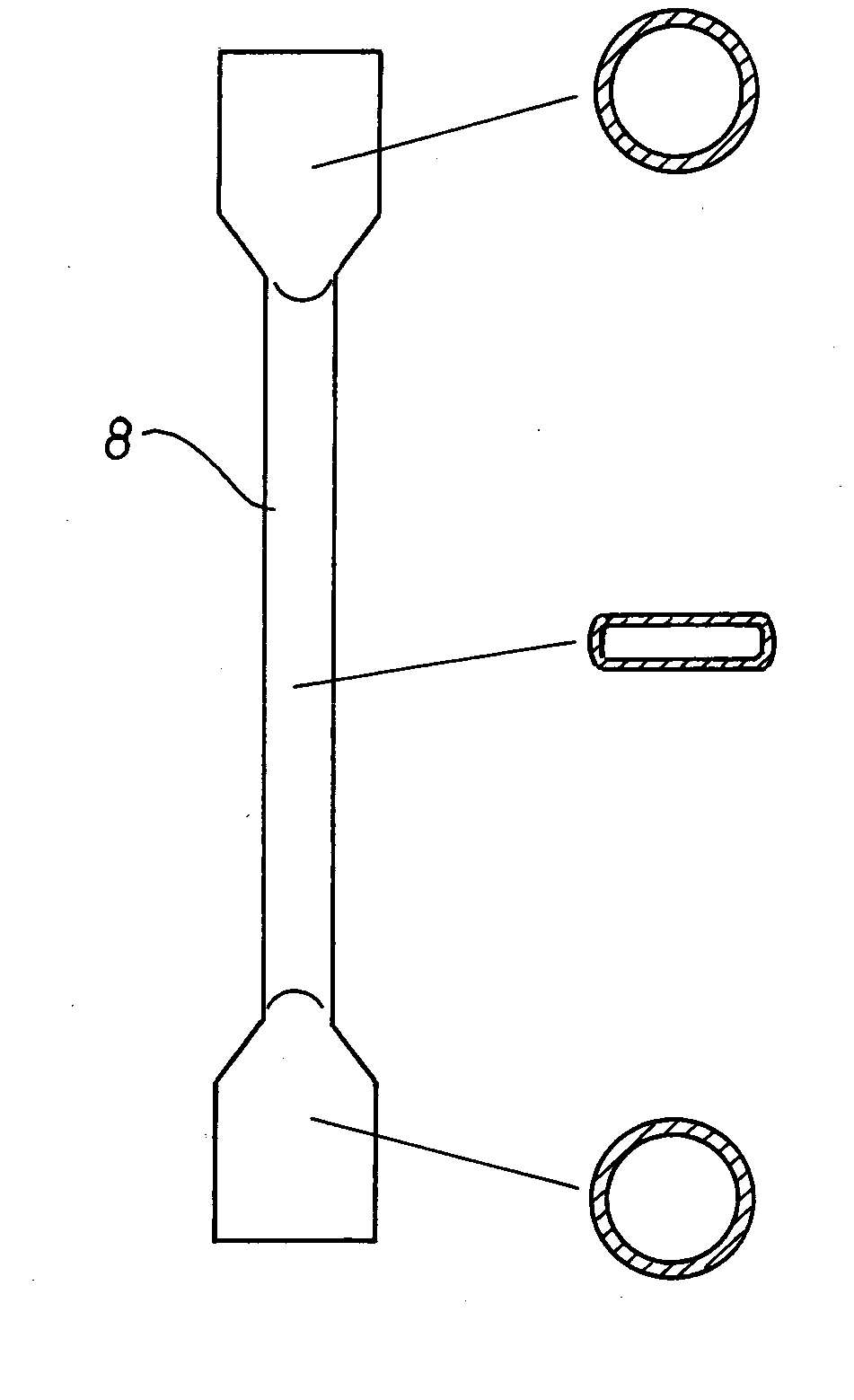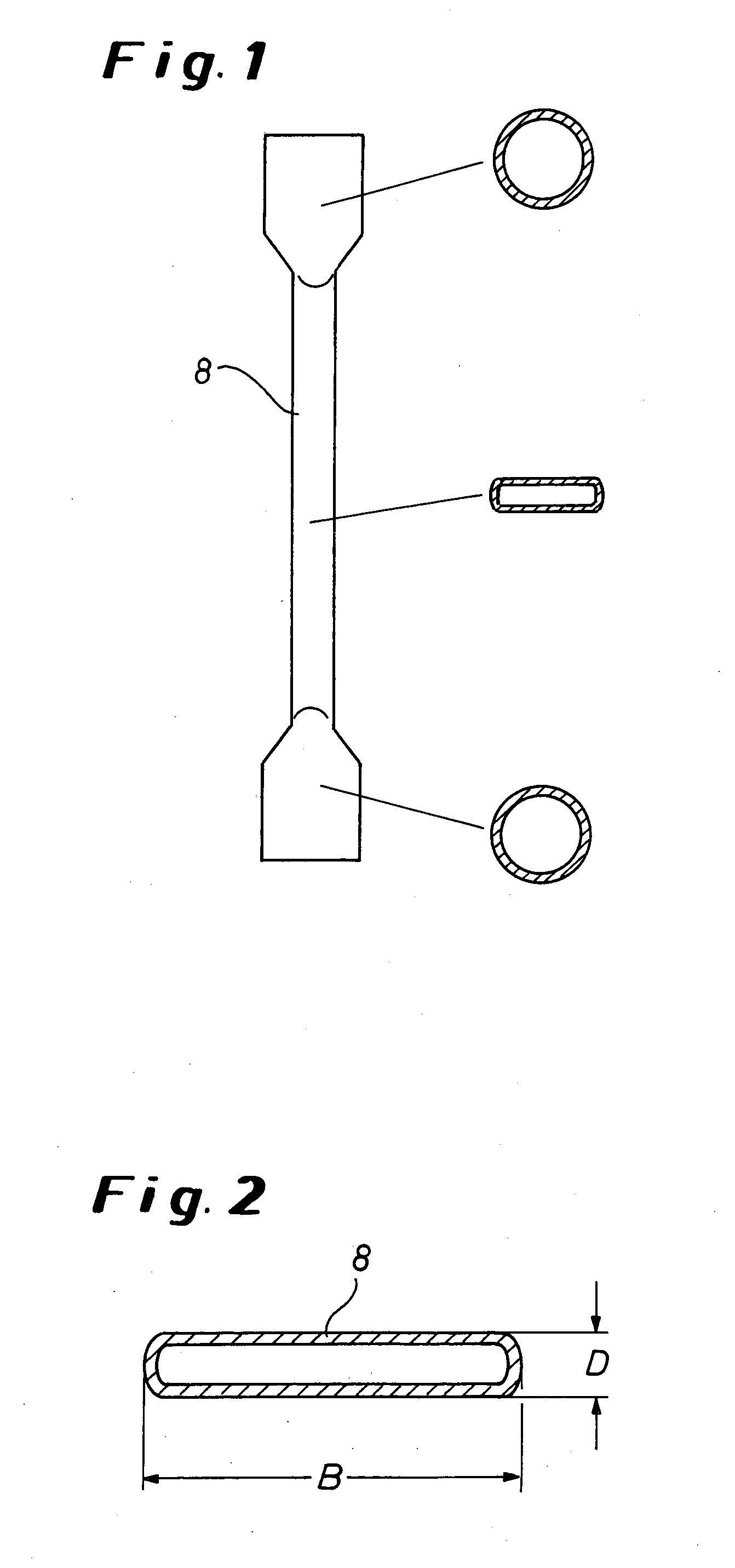Process and apparatus for removing volatile substances from highly viscous media
a technology of volatile substances and high viscosity, applied in the direction of lighting and heating apparatus, separation processes, machines/engines, etc., can solve the problems of difficult scaling up for larger production plants, inability to generate turbulent flow with the aid of indentations, etc., and achieve the effect of low thermal load
- Summary
- Abstract
- Description
- Claims
- Application Information
AI Technical Summary
Benefits of technology
Problems solved by technology
Method used
Image
Examples
example
Removal of Volatile Components from a Polymer Solution:
[0082] A preheated polymer solution consisting of about 80% wt. ABS and about 20% wt. of monomer or solvent (acrylonitrile, styrene, ethylbenzene and methyl ethyl ketone) is transported via the feed chamber 2 with perforated tray 3 into a compact-tube heat exchanger having four tubes 8. The tubes have a total length of 1,310 mm, the flat tube region being 1,170 mm long and, in the rectangular region, having a slot thickness D of 3 mm and a slot width B of 12 mm (cf. FIG. 1). The tube 8 is heated with oil by the countercurrent method. The entry temperature of the polymer solution in the heat exchanger 4 is 195° C. The polymer solution flows with a polymer throughput of 6 kg / h downwards through the tubes 8 heated at 240° C. and leaves the tube 8 at a temperature of 226° C. A pressure drop of 52,800 hPa is established over the tube length. The volatile substances are separated from the melt in the devolatilization container 5 at ...
PUM
| Property | Measurement | Unit |
|---|---|---|
| height | aaaaa | aaaaa |
| height | aaaaa | aaaaa |
| width | aaaaa | aaaaa |
Abstract
Description
Claims
Application Information
 Login to View More
Login to View More - R&D
- Intellectual Property
- Life Sciences
- Materials
- Tech Scout
- Unparalleled Data Quality
- Higher Quality Content
- 60% Fewer Hallucinations
Browse by: Latest US Patents, China's latest patents, Technical Efficacy Thesaurus, Application Domain, Technology Topic, Popular Technical Reports.
© 2025 PatSnap. All rights reserved.Legal|Privacy policy|Modern Slavery Act Transparency Statement|Sitemap|About US| Contact US: help@patsnap.com



